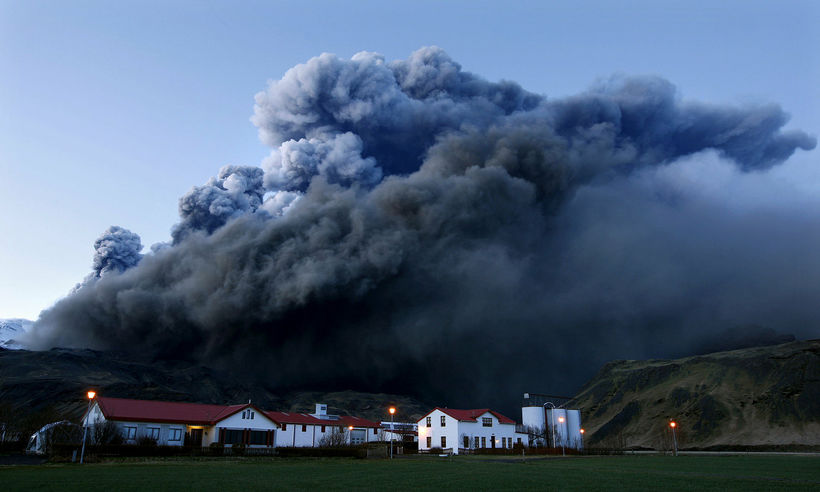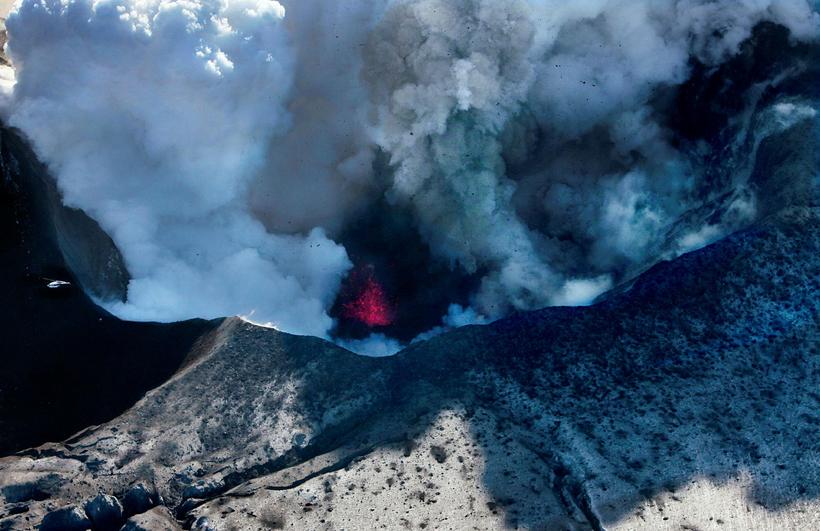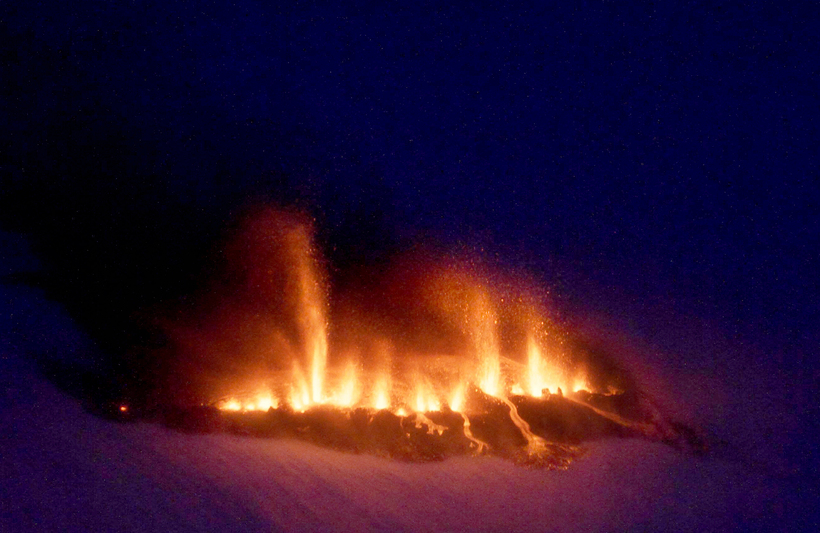Eyjafjallajökull Eruption Remembered
Ten years ago this week, an eruption began in a crater under the ice cap of Eyjafjallajökull glacier, South Iceland. Prior to that, on March 20, an eruption had begun in the nearby Fimmvörðuháls, between Eyjafjallajökull glacier and Mýrdalsjökull glacier. The eruption in Eyjafjallajökull continued until May 22, attracting world attention.
Morgunblaðið remembers this famous eruption, which not only caused major damage to farms and land, but disrupted flight service worldwide, since tiny particles of ash would have damaged aircraft engines.
For a while, all international air traffic was redirected to Akureyri, North Iceland, and the city of Glasgow, Scotland, became a connecting point for Icelandair flights across the Atlantic. For days, all air traffic in Europe was canceled, affecting passengers worldwide.
According to Freysteinn Sigurðsson, geophysicist, Eyjafjallajökull and the nearby area continue to be monitored, but in general, this is not a very active volcano.
“The volcanic activity in 2010 taught us a great deal about how volcanic ash spreads at high altitudes and how it impacts air traffic and modern society,” Freysteinn states. “There have been major advancements in the measurements and modeling of volcanic materials at high altitudes since 2010, as well as in our knowledge of the effects of volcanic ash on aircraft engines. On top of that, we managed to obtain unique measurements of activity under the surface of the earth, and our interpretations of those are still being referred to internationally.”
The volcanic eruption affected tourism in Iceland in a major way. The year prior to the eruption, the country had received half a million foreign tourists, and in an effort to prevent a decline in that sector, a project called Inspired by Iceland was launched by Promote Iceland. Its aim was to take advantage of the attention the eruption had created.
In the wake of the eruption, altogether 400 foreign reporters visited the country. By the end of 2010, 488,000 foreign tourists had traveled to Iceland. The years that followed saw a major explosion in terms of tourist numbers.
“The unity created at the time was fortunate for the Icelandic tourism industry,” states Inga Hlín Pálsdóttir, international marketing expert, who worked for Promote Iceland at the time.
“Cooperation and dialogue are key to success and increase our strength in every type of crisis – something we should keep in mind during the current situation,” she adds, referring to the COVID-19 pandemic.






/frimg/1/60/10/1601046.jpg)



